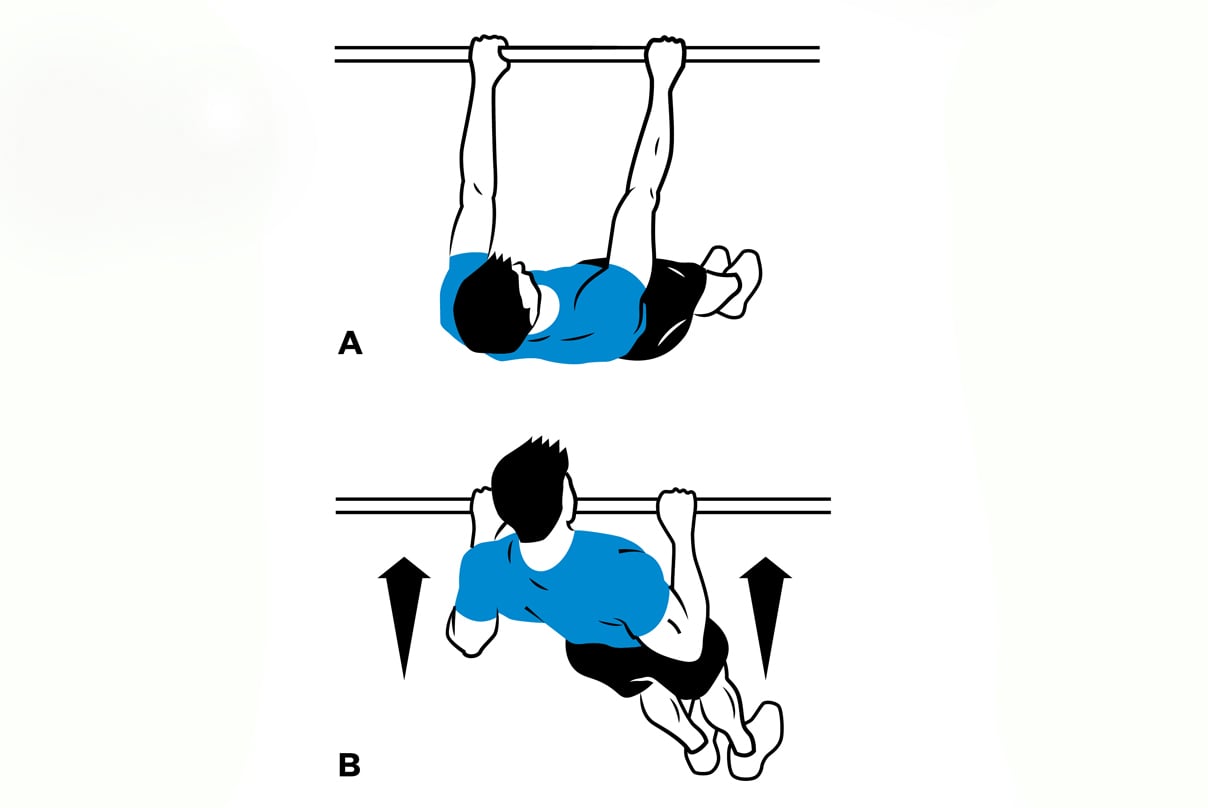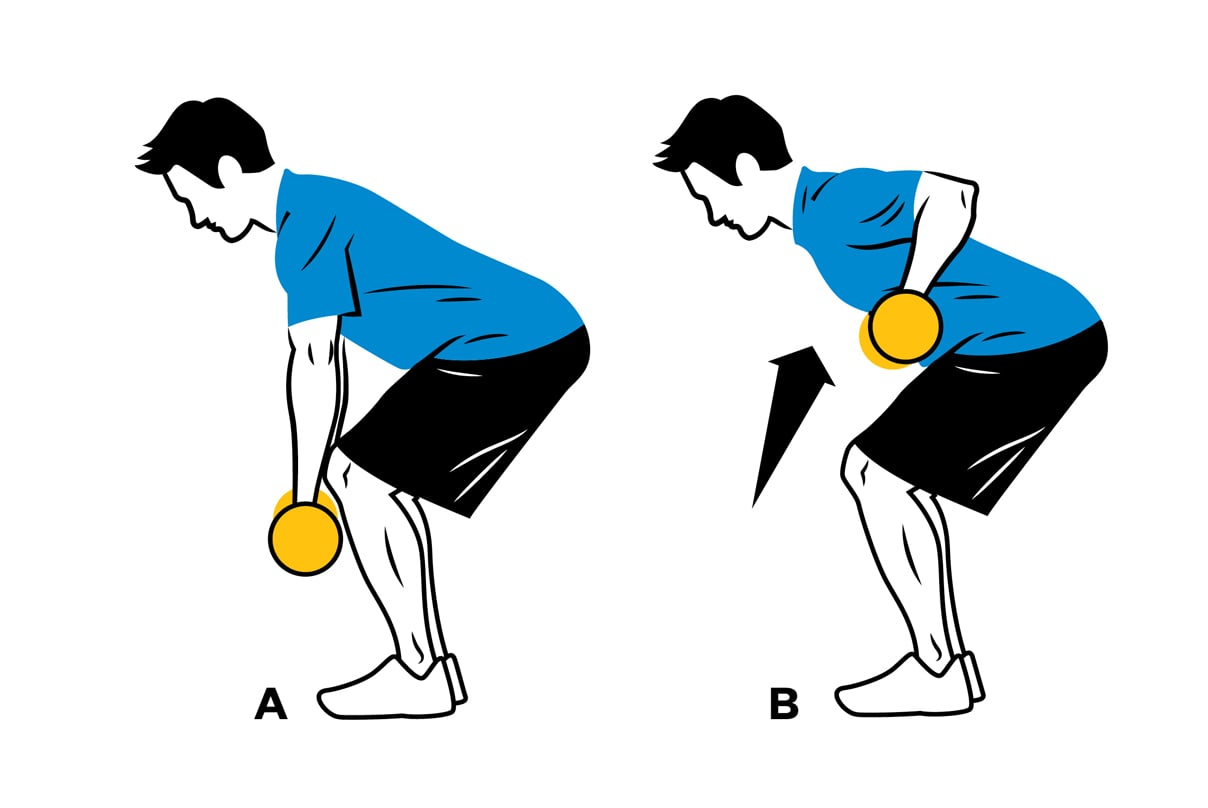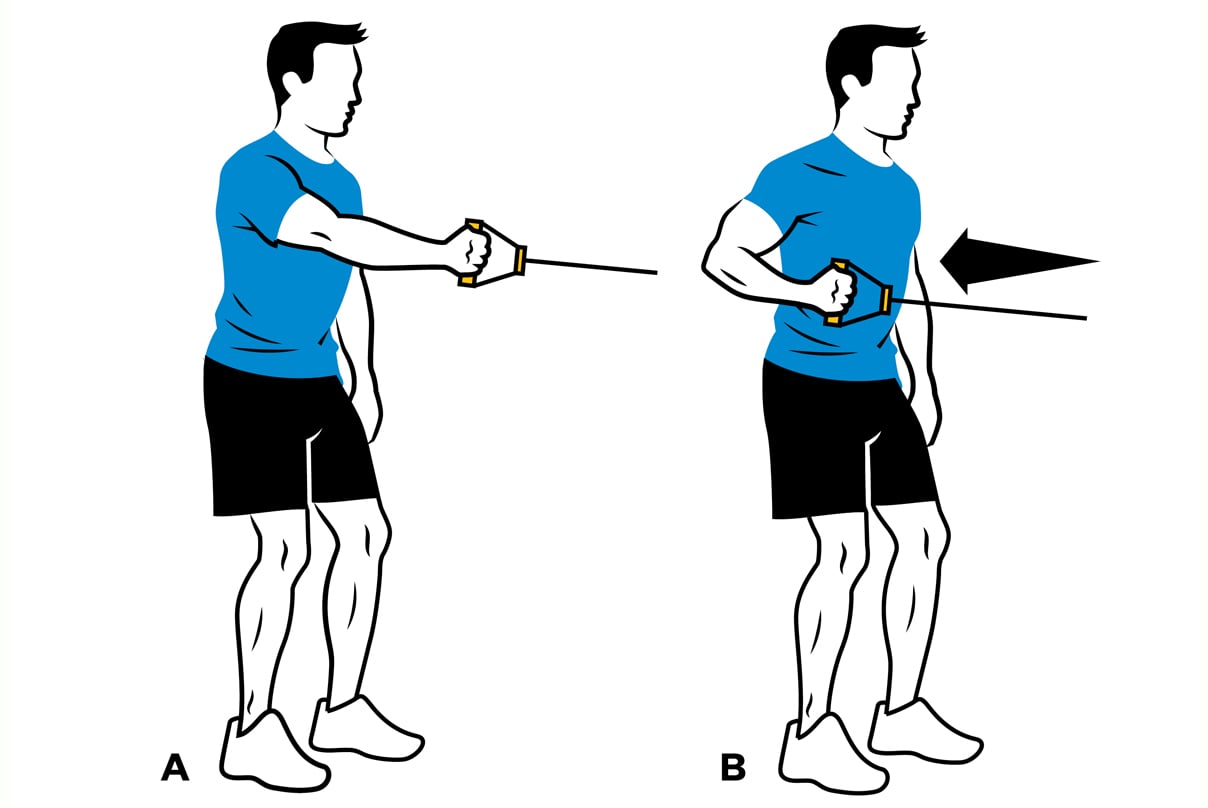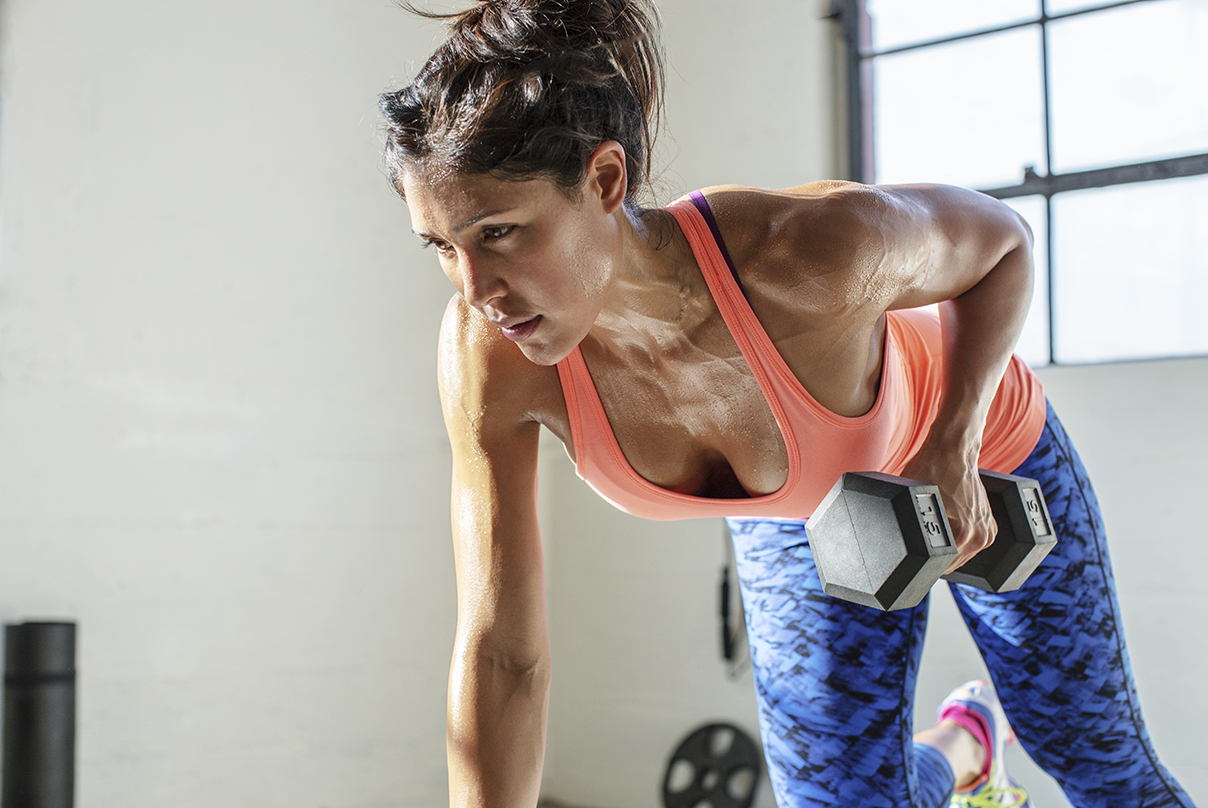Originally published in the 2015 summer issue of American Fitness Magazine.
There’s a saying around most gyms: If you’re not rowing, your muscles aren’t growing. But the row is more than this trite saying lets on. It can target specific muscles and help clients with rehabilitation and performance.
“There are row variations that are good for the upper back, working the lats, traps, rhomboids, and obliques,” says James Westphal, NASM-CPT, CES, PES, Master Trainer, who owns Jim’s Fitness & Nutrition in Missouri Valley, Iowa. “Isolating certain muscles with rows can help build strength in the upper back and stabilize the spine.”
Here, Westphal shares three row variations and how they can help your clients.

Inverted Row
Benefits:
- Great for beginners, with easy progression.
- Activates the upper and mid back muscles of the trapezius, rhomboids, and latissimus dorsi.
- Less compressive force to the spine when compared to the bent-over row, making it more suitable for those with lower back issues.
Inverted-Row Technique:
- Lie on the floor with chest directly under a fixed bar that’s a few inches higher than arm’s length (a suspension trainer can also be used).
- Grab bar with an overhand, shoulder-width grip.
- Straighten body and pull your middle chest up to the bar. Pause.
- Lower body, stopping just short of fully extending arms.
- Repeat.
Tips:
- Exhale on the way up, inhale on the way down.
- Increase difficulty by moving body to a more horizontal position (by placing feet on a box, for example).

Bent-Over Row
Benefits:
- Great overall upper and lower back exercise.
- Promotes spinal stability, but due to compressive loads, may not be a good choice for those with lower back pain or previous injuries.
Bent-Over Row Technique:
- Stand with feet shoulder-width apart, knees slightly bent. Grip a barbell in an overhand position slightly wider than shoulder-width with arms extended just short of the floor.
- Bend over at the hips at about a 60-degree angle, keeping back straight, not rounded. Let weight hang toward the floor.
- Pull the bar up toward your chest, just below the pecs, pushing your chest out and keeping your lower back straight.
- Return weight to start.
Tips:
- If the back starts to round, the weight may be too heavy.
- Keep elbows close to the side while rowing.

Standing Single-Arm Cable Row
Benefits:
- More advanced move.
- Isolates the upper latissimus dorsi instead of the upper back.
- May not be ideal for clients with excessive anterior pelvic tilt or limitations on rotational spinal movement.
Standing Single-Arm Cable row Technique:
- Stand with feet shoulder-width apart, hips and shoulders parallel to a rowing cable machine.
- Handle of cable should be directly in front of shoulder.
- Stand far enough away from cable machine that there’s a little bit of tension when you grasp cable.
- Hold cable with hand forward, brace core to keep hips and shoulders parallel to the machine.
- Pull cable back just below your pecs; keep elbow close to body.
- Extend arm forward until it has nearly reached full extension at the starting position.
Tips:
- Brace your core; maintaining form is critical for this exercise.
- Exhale as you pull, inhale as the weights return to starting position.

















